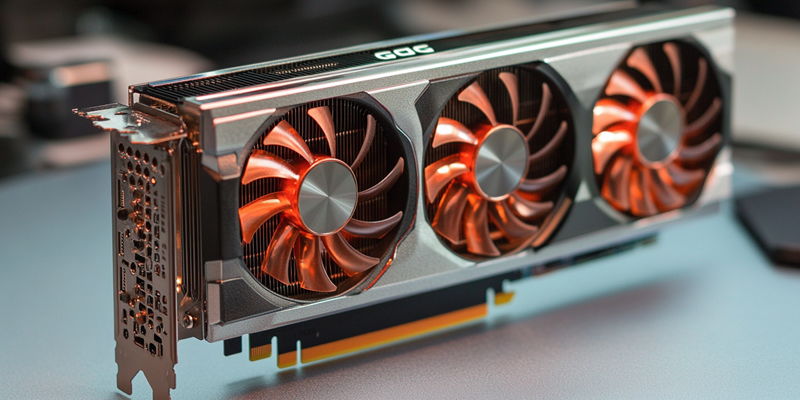As the tech world eagerly anticipates Gigabyte’s release of new NVIDIA GeForce RTX 4070 custom GPUs, all eyes are on how these graphics cards, equipped with GDDR6 memory, will perform. The news comes amid a global shortage of GDDR6X memory, leading manufacturers to seek alternatives. Gigabyte’s decision to utilize GDDR6 memory chips instead of the usual GDDR6X is a significant shift, sparking curiosity and speculation among consumers and tech enthusiasts alike. The upcoming models are part of the WindForce series and will be available in both dual-fan and triple-fan configurations, with options for overclocked and standard versions. These new GPUs, registered on the Eurasian Economic Commission (EEC) on August 14, 2024, are expected to hit the market imminently. The change from GDDR6X to GDDR6 is a pragmatic response to current supply constraints, but it raises important questions about performance, pricing, and user experience.
The Shift to GDDR6 Memory
The transition from GDDR6X to GDDR6 memory is a direct result of the global shortage of GDDR6X chips. This shortage has prompted major manufacturers, including Gigabyte and GALAX, to explore viable alternatives. The new RTX 4070 models, identified as ‘V2’ versions, reflect this adaptive strategy. Despite using GDDR6 memory, which offers slightly slower speeds of 20Gbps compared to the 21Gbps of GDDR6X, the performance difference is expected to be minimal for most users. The key specifications of these new models, such as 12GB VRAM on a 192-bit memory bus and 5888 CUDA Cores, remain consistent with the current RTX 4070 lineup. However, the real test will be whether these GPUs meet the performance expectations of gamers and tech enthusiasts who demand the best.
The shift is not merely a technical adjustment but a strategic move to ensure the continued availability and competitiveness of the RTX 4070 line. While the downgrade from GDDR6X to GDDR6 might seem significant on paper, actual gaming and computing experiences are likely to remain largely unaffected. This is particularly relevant in a market where even minor performance differences can influence consumer choices. It’s crucial for Gigabyte to maintain user trust and satisfaction during this transition. The success of the new RTX 4070 models will depend on their ability to deliver consistent, high-quality performance despite the change in memory type.
Performance and Pricing
For potential buyers, one of the most pressing questions is how the new GDDR6-equipped RTX 4070 models will be priced. The current NVIDIA GeForce RTX 4070 GPUs are available in the price range of $540 to $550, following a reduction due to the launch of the RTX 4070 Super edition. It remains uncertain whether the new models will adhere to this pricing or if Gigabyte will introduce them at a lower price point, reflecting the use of GDDR6 memory. Regardless of the final pricing strategy, Gigabyte needs to ensure that these GPUs offer value for money. Any perceived compromise in performance must be balanced by competitive pricing to maintain consumer interest.
From a business perspective, the decision to switch to GDDR6 memory is a calculated risk. The primary goal is to mitigate supply chain issues while continuing to meet consumer demand. Given the current market dynamics, Gigabyte’s approach seems logical. However, the tech community is keenly aware of how price-sensitive graphics card markets can be. Any significant deviation from expected performance metrics could lead to consumer backlash and affect sales. For Gigabyte, clear communication about the new models’ capabilities and advantages, despite the memory change, will be crucial in managing consumer expectations and maintaining market momentum.
Consumer and Industry Response
Potential buyers are keen to know the price of the new GDDR6-equipped RTX 4070 models. Current NVIDIA GeForce RTX 4070 GPUs are priced between $540 and $550, following a price reduction due to the launch of the RTX 4070 Super edition. It’s unclear whether the new models will stick to this range or if Gigabyte will offer them at a lower price due to the use of GDDR6 memory. Either way, Gigabyte needs to ensure that these GPUs provide good value for money. Any perceived dip in performance must be offset by competitive pricing to keep consumer interest high.
From a business standpoint, the switch to GDDR6 memory is a strategic move. The main aim is to alleviate supply chain issues while still meeting consumer demand. Considering the current market conditions, Gigabyte’s strategy appears sensible. However, the tech community knows how sensitive the graphics card market is to pricing. Any major shortfall in performance could lead to consumer dissatisfaction and impact sales. For Gigabyte, clearly communicating the new models’ capabilities and benefits, despite the memory change, will be essential for managing consumer expectations and sustaining market momentum.

